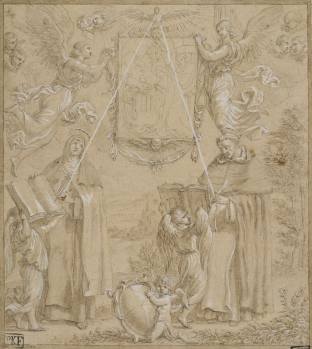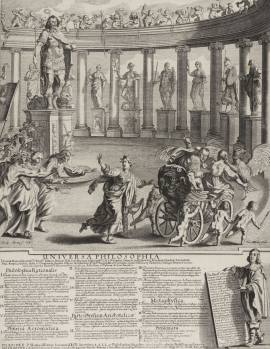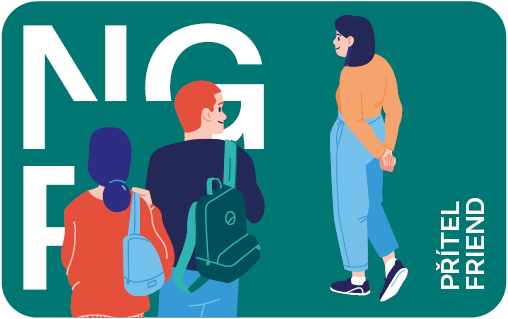Karel Škréta
(1610 Prague – 1674 Prague) is recognized as the founder of Czech Baroque
painting and a renowned European artist. As a draughtsman and inventor (print designer) he also played
a crucial role in shaping Baroque printmaking in the Czech lands.
Škréta received
his basic artistic training in Prague, and in 1627 he went abroad to further develop
his skills and knowledge. He spent over ten years in Switzerland, Germany, and especially
in Italy. He became acquainted with the Baroque style and new types of prints,
especially thesis prints (broadsheets announcing university defenses). He
put these experiences to good use after his return to Prague. From the 1640s
onwards, he designed graphic sheets with mostly allegorical themes that stand
out for their artistic qualities, sophisticated conception, and iconographic
richness.
The works chosen for our intimate exhibition present almost all the areas of printmaking that he worked in - book illustrations, university-related engravings (thesis prints), devotional prints, and portraits. Škréta's designs were executed primarily by renowned Augsburg printmakers, less often by Prague engravers. On display are some of his model drawings and drafts relating to the prints.
The work of Karel Škréta the Younger is also presented.
Curator: Petra Zelenková
1—1 / 7













